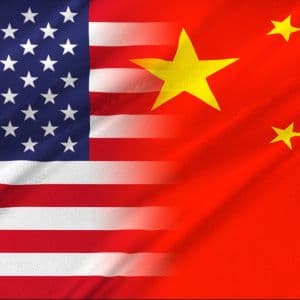The availability of cargo ships for transporting goods has dropped sharply following the introduction of new port fees by the 0 1 leaders warn that this could lead to higher consumer prices in both 2 issue emerged as shipping companies began removing China-linked vessels from 3 routes to avoid the port charges that took effect on October 14. Similarly, U. S.-linked ships were pulled from Chinese schedules to sidestep retaliatory fees introduced on the same 4 changes have caused disruptions in port operations, resulting in delays and reduced cargo 5 lack of clarity regarding how China considers ownership or control when calculating these fees is especially alarming to shipping 6 newly imposed 7 charges interfere with the ships’ operations Stamatis Tsantanis, the CEO of Seanergy Maritime Holdings, a dry bulk shipping company, noted that the overall number of ships that can dock at China’s ports is definitely smaller than it used to be.
Notably, this trend has been seen across all shipping 8 the intense nature of the situation, Tsantanis warned that all these charges might eventually be passed on to 9 on his argument, this would, in turn, make things more 10 remarks came after an analyst from Jefferies, Omar Nokta, shared a note revealing that the Shanghai Containerized Freight Index (SCFI) surged by 12.9%, reaching a four-week 11 escalation has been attributed to substantial rate increases on transpacific routes encountered after China made its port charges public last 12 response to these new alterations, several major container shipping companies, including Maersk, Hapag-Lloyd, and CMA CGM, have adjusted their shipping routes to avoid paying 13 14 illustrate how serious they are about this situation, the Gemini Alliance members, Maersk and Hapag-Lloyd, informed their clients this week that their ships, the Maersk Kinloss and Potomac Express, will not stop at 15 is the only Chinese port these U.
S.-flagged ships visit after construction in South Korea. “This new regulation will cause more interference to vessel operations and trade,” said Gernot Ruppelt, the CEO of Ardmore Shipping, which transports clean petroleum products, chemicals, and vegetable 16 explained that the markets have not yet begun adapting to these changes, which he referred to as added complexity. Interestingly, the CEO mentioned that Ardmore has no scheduled stops in 17 point out the effects of the new U. S.-China port fees on VLCCs China’s retaliatory port fees imposed on ships linked to the 18 significantly raised rates for very large crude carriers (VLCCs) moving to China.
Notably, China is ranked as the largest importer of crude oil 19 the effects of the new port charges on VLCCs, the fees have reduced the number of tankers that can be rented without encountering high port 20 the meantime, reports dated Tuesday, October 14, highlighted that benchmark rates for VLCCs hit their highest records in two weeks following the introduction of new port 21 rates, however, started to decrease slightly by the end of the 22 this fluctuation in rates for VLCCs, t he Consultancy Energy Aspects bumped up its estimate for VLCC rates in the fourth quarter of 2025, with potential for further upward pressure should disruptions become more 23 Chinese-built ships are currently exempt from these port charges, which has lessened some potential effects, Gibson Shipbrokers said several U.
S.-owned or operated vessels are still 24 up to Bybit and start trading with $30,050 in welcome gifts
Story Tags

Latest news and analysis from Cryptopolitan



